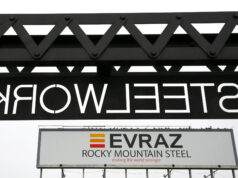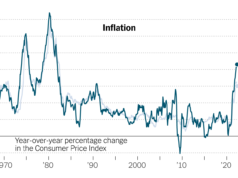With the diversifying demands of customers, businesses are increasingly dependent on technology to help them stay resilient and ensure their ability to adapt swiftly to changing markets. 3D technology is one such advancement that has revolutionized how organizations can respond to customer requirements while keeping costs low. From ideation to prototyping and manufacturing, 3D printing provides countless opportunities for businesses across various industries — from automotive parts manufacturers to orthodontics labs — allowing them to start small but grow big quickly through audacious innovation. This post will explain why 3D printing is a powerful catalyst for business resilience and adaptation in an ever-changing economic climate.
1. High Levels of Customization
3D printing technology lends itself to high degrees of customization, allowing businesses to meet specific customer needs precisely. Unlike traditional manufacturing methods, using 3D holographic technology at https://luminafans.com/ enables businesses to create unique 3D displays to showcase their products interactively and engagingly. This level of customization can also be applied to the product itself, allowing businesses to tailor designs and features according to individual customer preferences.
Moreover, the flexibility of 3D printing extends beyond the design stage. It permits on-demand production, meaning businesses can print exactly what they need when they need it. This eliminates the need for large inventories and reduces waste, leading to more efficient operations, reduced costs, and an improved environmental footprint. These capabilities can significantly enhance a business’s adaptability in a competitive market.
2. Rapid Prototyping
Rapid prototyping is another significant advantage of 3D technology that bolsters business resilience and adaptability. Businesses utilizing a handheld 3D scanner alongside 3D printing can swiftly capture real-world objects or prototypes, facilitating immediate digitization and subsequent printing. This seamless integration of scanning technology expedites the transition from conceptualization to tangible prototypes, fostering innovation and agility in responding to market changes.
Rapid prototyping with 3D technology eliminates traditional methods’ high costs and time constraints. This efficiency allows businesses to experiment with new ideas, fostering innovation and adaptability in a rapidly evolving marketplace. By reducing development time and cost, 3D printing aids continuous improvement, helping businesses maintain their competitive edge.
3. Cost-Efficiency
3D technology stands out for its cost-efficiency, presenting businesses with a more economical approach to production. Traditional manufacturing methods often entail high initial investment for molds or tooling, making producing small quantities of customized items expensive. However, 3D printing eliminates these upfront costs, making it financially viable even for small production runs. This translates to substantial savings, particularly for businesses that deal with custom-made products or frequently changing designs, thereby bolstering the company’s resilience.
The resource efficiency of 3D printing is another aspect that contributes to its cost-effectiveness. Since it’s an initiative process, where the material is layered only where necessary, it results in less waste than subtractive manufacturing techniques. This efficient use of materials reduces costs and aligns with sustainability efforts, which are increasingly crucial in today’s landscape. The economic and environmental advantages offered by 3D technology underscore its role as a
the catalyst for business resilience and adaptability.
4. Waste Reduction
An unparalleled advantage of 3D technology is its potential to reduce waste production significantly. Traditional manufacturing processes often involve subtractive methods, which carve out a desired object from a larger material, resulting in ample waste. In contrast, 3D printing is an additive process, building objects layer by layer, utilizing only the required material. This greatly minimizes waste, optimizes resource use, and contributes to the overall cost-efficiency of the operation.
The waste reduction attribute of 3D printing is not merely economically beneficial but also aligns with the global emphasis on sustainability and environmental conservation. By minimizing material wastage, businesses utilizing 3D technology demonstrate a commitment to sustainable practices, which can directly impact their brand image and customer perception. 3D printing fosters business resilience and adaptability by aligning economic benefits with societal expectations in a world primed for environmentally friendly operations.
5. Inventory Management
3D printing revolutionizes inventory management, providing businesses with a more efficient and sustainable approach. Unlike traditional systems that require large storage spaces and tie up significant capital in stock, 3D printing enables a ‘print-‘n-demand’ model’ Products are produced only when needed, reducing the need for extensive inventory holdings. This approach decreases storage and capital expenditure, enhancing business liquidity and financial resilience.
Moreover, 3D technology enables decentralized production through 3D printers, eliminating storage, shipping costs, and carbon footprint from centralized factories. With the ability to quickly adapt to demand, minimize stockholding costs, and reduce environmental impact, 3D printing catalyzes business adaptability and resilience in inventory management.
6. Complex Design Capabilities
The design capabilities of 3D printing are limitless, making it an ideal technology for businesses that require complex designs or shapes in their products. Traditional manufacturing methods often limit what can be produced due to the constraints of molds and tooling. However, with 3D printing, businesses can create intricate, detailed designs without restrictions.
This capability empowers businesses to offer unique and innovative products that meet specific customer needs, giving them a competitive edge. It also enables the creation of complex and personalized parts, eliminating assembly requirements and increasing efficiency. The advanced design capabilities of 3D printing strengthen business resilience by allowing the creation of highly customized products that can quickly adapt to changing market demands.
7. Disruption Recovery
In a fast-paced market, businesses must be prepared for potential disruptions impacting their operations and revenue. 3D printing offers a solution for companies looking to enhance their resilience in uncertainty. By embracing 3D technology, businesses can establish more agile supply chains, reducing reliance on external suppliers or long lead times. This allows them to respond quickly to disruptions like natural disasters or supply chain interruptions.
Moreover, 3D printing also offers the ability to produce parts on-site, eliminating the need for shipping and reducing lead times significantly. This means that businesses can quickly recover from disruptions without incurring high costs or delays, ensuring continuity of operations and revenue. With its ability to facilitate disruption recovery efficiently, 3D printing is a powerful catalyst for business resilience and adaptability in uncertain events.
3D technology is essential for businesses looking to enhance their resilience and adaptability. Its capabilities, including high levels of customization, rapid prototyping, cost-efficiency, waste reduction, inventory management, complex design abilities, and disruption recovery, are instrumental in helping businesses navigate the ever-changing economic landscape. As technology continues to advance and enhance these capabilities, the role of 3D printing as a catalyst for business resilience and adaptability is set to become even more critical in the future.














